Hamish Dounan, Director of Sydney-based landscape architecture studio, CONTEXT, shares his insights on the possibilities of outdoor learning in education design.
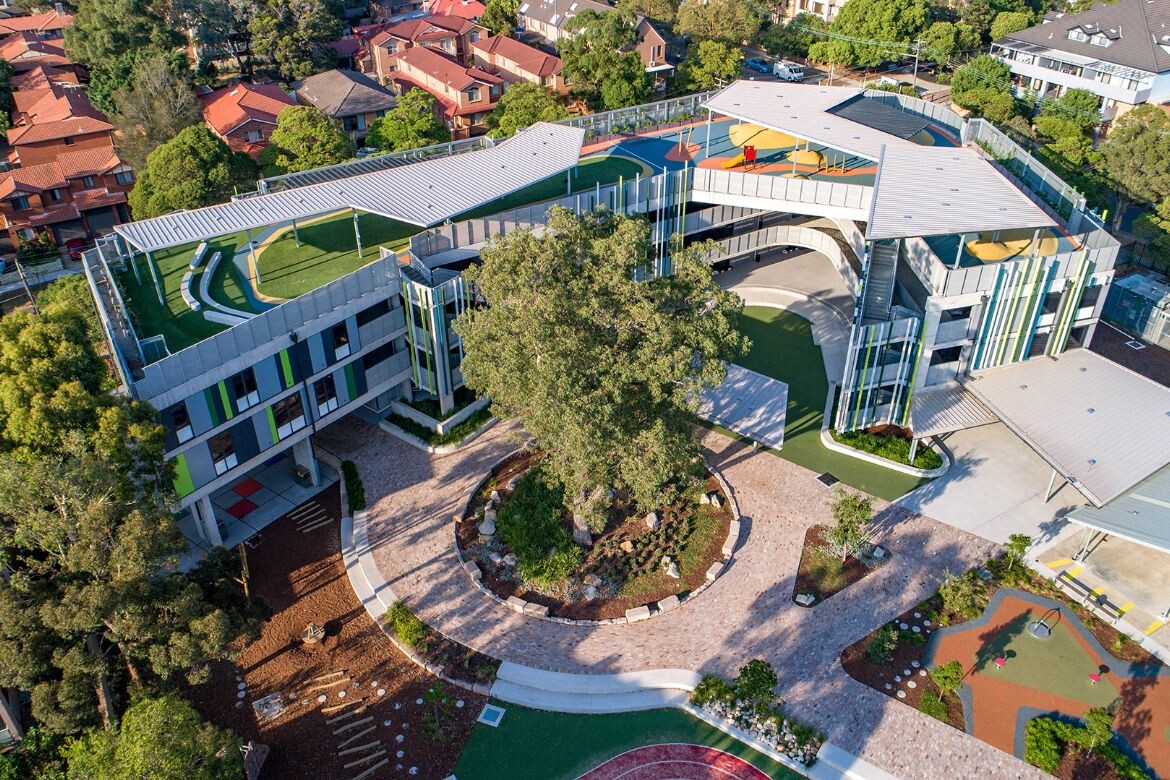
March 11th, 2024
In an age of urbanisation and technology, how should we harness good design to encourage and support children to spend more time outdoors and engage in free-play and hands-on learning?
Many studies cite that increased time in nature aids the growth, development and wellbeing of children, and so biophilic design in education settings is critical.

I lead a team of landscape architects in Sydney, who are dedicated to working with school communities across New South Wales to design outdoor landscapes that have nature at their heart, ensuring they go beyond the formal ‘play’ provision.
Over the past few years we have collaborated closely with TKD Architects on a number of school projects, most recently Homebush West School where together we have worked to upgrade and extend the facilities – with inclusion, sustainability, adaptability and materiality being core considerations in our designs.
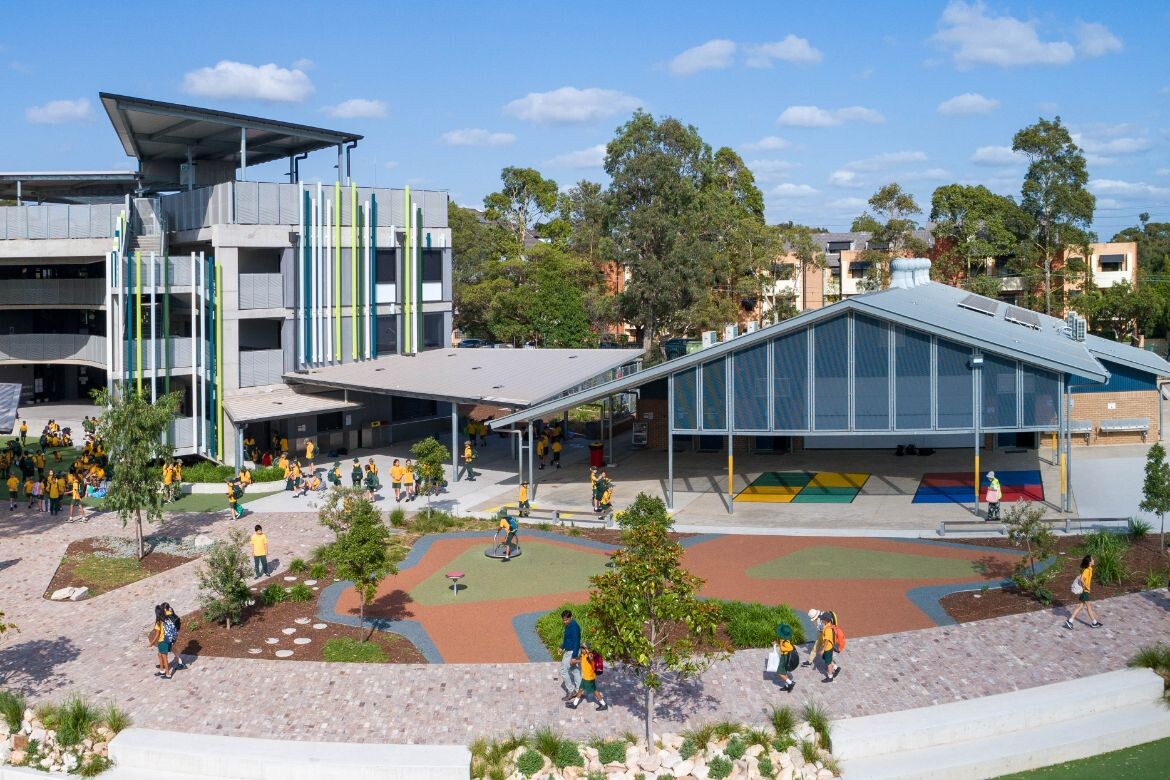
Inclusion
Designing outdoor spaces that can be used and enjoyed by everyone in the school is critical. Through extensive consultation with the school community and the wider project team – including local government, teachers, parents and students – we can, as landscape architects, ensure that design interventions are inclusive and accessible to all. Factors ranging from gender to ability, neurodiversity, and cultural background must be considered.
A diverse range of outdoor spaces, from active sports to quiet play areas, outdoor classrooms, refuge areas and productive gardens ensures all students are able to reap the rewards of outdoor education. At Homebush West School, our landscape design incorporates details such as widened, recycled brick pathways, sensory and productive gardens, signage and plant labels – ensuring everyone feels a sense of inclusion.
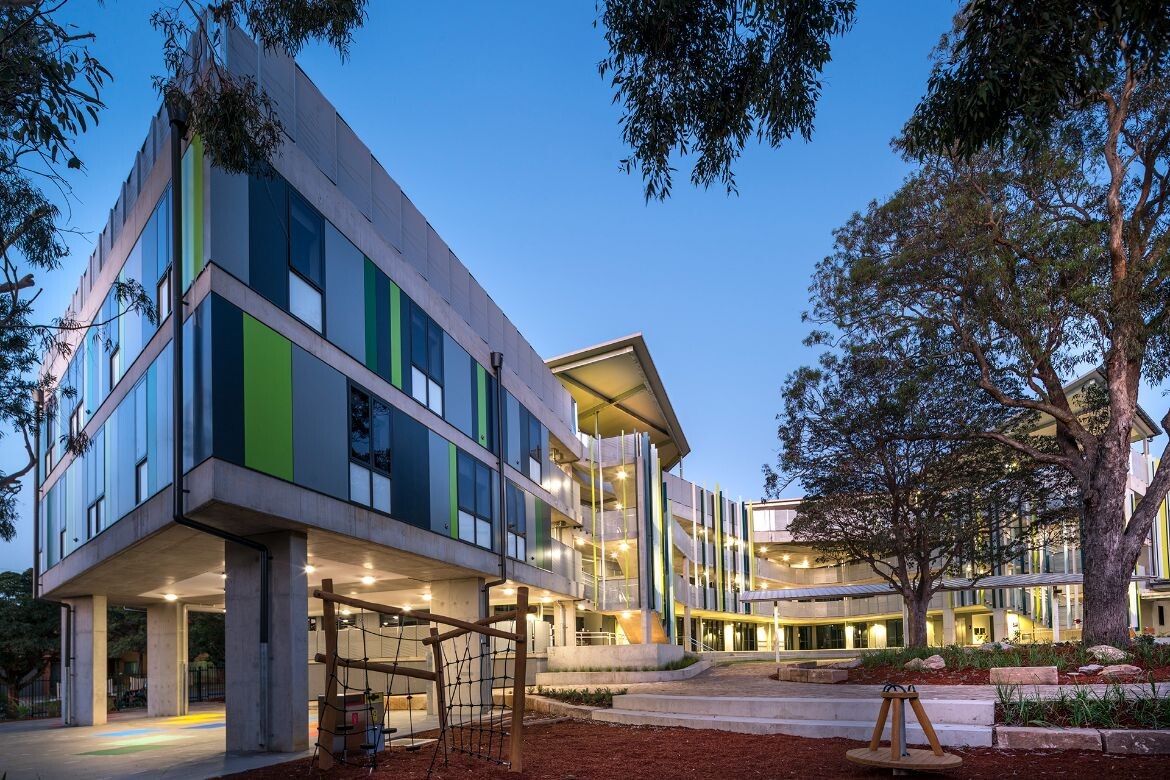
Sustainability
Designing resilient landscapes that will stand the test of time is vital. Guided by our team of expert horticulturalists, our ecological strategies focus on planting native species; adapted to local conditions, they require minimal maintenance. The bush play garden at Homebush West School has created a habitat that supports local wildlife such as warbling magpies, lizards and dragonflies. Creating an active and imaginative play space for students through informal trails and stepping stone logs, the garden also encourages the students to appreciate Australian ecology, and support their development as future stewards of the environment.
We also work closely with the architects to visibly embed water conservation and renewable energy systems throughout our designs. We do this through including rainwater collection measures such as swales and rain chains which are then used in the productive gardens, alongside solar panels and wind turbines, this encourages the students to learn about ecological cycles and responsible resource use.
Related: 5 insights from Australian designers at WAF 2023

Adaptability
Throughout our designs for education landscapes, we avoid creating prescriptive zones that have fixed uses for one specific sport or activity. Instead we design natural multi-functional spaces, which can be adapted over time to meet changing recreational and educational needs. The rooftop garden at Homebush West School exemplifies this approach, where spaces include a large open lawn area, alongside several play structures between soft-fall mounds and a small amphitheatre and running track. Here, each area is designed to accommodate different sized groups and different student needs.
Creating comfortable spaces that can be used in all weather conditions, such as the shaded tiered amphitheatre at Homebush West School, is crucial. Canopy cover can create both shaded and fully-covered environments which, when integrated with moveable furnishings like outdoor rugs and beanbags can be used as play and learning spaces throughout the year.

Materiality
The setting – whether that be urban or rural – is also critical to informing our design decisions, particularly around curating a material palette, considering how colour, texture, composition and source will stimulate the students and respond to the climate in different ways. Throughout all of our projects, we prioritise sourcing sustainable materials that are locally manufactured.
At Homebush West School, providing seating throughout the site was a key part of the brief. In response, we designed a combination of curved and straight benches comprising a combination of both pre-cast concrete and natural materials such as sandstone logs. Encircling planting beds and looking out to the playground, this seating design promotes informal social gatherings and provides opportunities for group learning in an outdoor setting.
Well-designed landscapes promote sustainability and inclusion while creating spaces that stimulate curiosity and enjoyment – encouraging children to thrive. Through the thoughtful incorporation of native species, sensory elements, dynamic play opportunities and an atmosphere of imagination, we as landscape architects are able to craft outdoor classrooms that benefit children and the environment alike.
CONTEXT
context.net.au
Photography
Mike Chorley
More landscape comment: T.C.L on unlocking the potential of Brisbane’s creek catchments
INDESIGN is on instagram
Follow @indesignlive
A searchable and comprehensive guide for specifying leading products and their suppliers
Keep up to date with the latest and greatest from our industry BFF's!

Welcomed to the Australian design scene in 2024, Kokuyo is set to redefine collaboration, bringing its unique blend of colour and function to individuals and corporations, designed to be used Any Way!
The new range features slabs with warm, earthy palettes that lend a sense of organic luxury to every space.

London-based design duo Raw Edges have joined forces with Established & Sons and Tongue & Groove to introduce Wall to Wall – a hand-stained, “living collection” that transforms parquet flooring into a canvas of colour, pattern, and possibility.
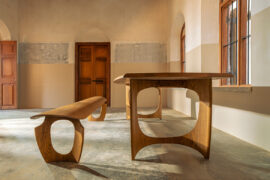
Architect, designer and craftsman Adam Markowitz bridges the worlds of architecture and fine furniture, blending precision, generosity and advocacy to strengthen Australia’s craft and design community.

With its latest outpost inside Shanghai’s bustling Hongqiao International Airport, HARMAY once again partners with AIM Architecture to reimagine retail through colour, movement and cultural expression.
The internet never sleeps! Here's the stuff you might have missed
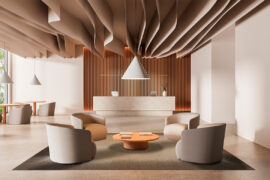
A stunning indoor space reveals artistry in every aspect, from outlook to underfoot.

Sydney Open invites the public to explore over 55 buildings, spaces and new additions to the skyline, with a newly released Talks & Tours program offering direct access to the architects behind Bundarra and Pier Pavilion.